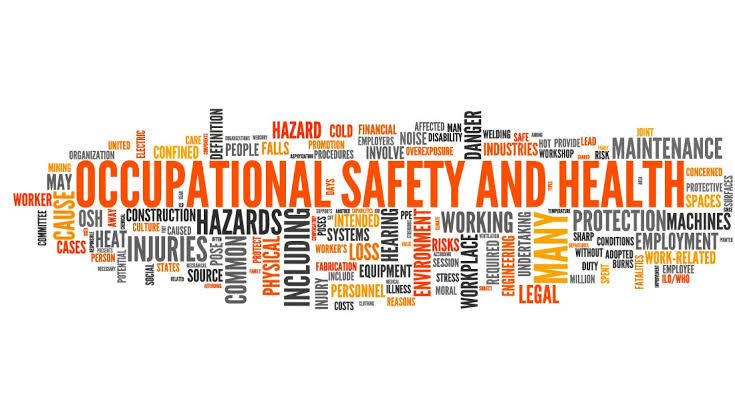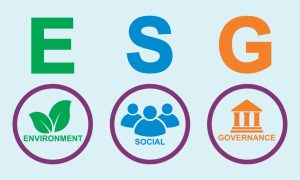NewsLetter
What is Occupational Health and Safety?

Occupational health and safety (OHS) is a branch of public health dedicated to monitoring illness and injury trends in workplaces. Experts in this field devise strategies and regulations to mitigate hazards that pose risks of physical or mental harm to workers, both presently and in the future. The scope of OHS is extensive, covering various disciplines ranging from hazardous materials and disease transmission to ergonomics and violence prevention. Today, most employers, whether private or public entities, are legally obligated to establish and uphold a safe and healthy work environment for their employees. However, there are exceptions to these regulations, such as self-employed individuals or farm workers who are immediate family members of the farm owner.
This article provides an overview of occupational health and safety, its historical evolution, regulatory frameworks, ongoing challenges, and career prospects within this field.
Workplace Safety: Then and Now
Over the past 150 years, working conditions for the average American have markedly improved. Significant safety legislation, alongside lesser regulations, has been enacted in recent decades, leading to the elimination of hazards like dangerous machinery, poorly lit offices, and inadequately ventilated factories. The concerted efforts of occupational health and safety experts have expanded beyond manual labor jobs, now encompassing all occupations across the United States. Despite progress, the field continues to evolve in response to emerging challenges.
Post-Civil-War Era
The post-Civil War era highlighted the glaring issue of workplace hazards, particularly in factories where young, inexperienced workers faced perilous conditions. Hazardous machinery, coupled with poor ventilation and sanitation, posed significant risks to worker safety. Reports from the Massachusetts Bureau of Labor in 1873 documented numerous incidents of severe injuries and fatalities due to inadequate safety measures. In response, Massachusetts became the first state to mandate factory inspections, setting a precedent for other states to follow suit. By 1890, 21 states had enacted laws aimed at addressing health hazards in workplaces.
Regulatory Evolution
Despite early efforts to improve workplace safety, regulatory frameworks were often fragmented and inconsistently enforced, leading to businesses circumventing regulations by relocating to states with laxer policies. To address this issue, comprehensive federal legislation was introduced. In December 1970, President Richard Nixon signed the Occupational Safety and Health Act into law, empowering the government to establish and enforce safety standards nationwide. Subsequently, the National Institute for Occupational Safety and Health (NIOSH) and the Occupational Safety and Health Administration (OSHA) were established to oversee compliance with these standards. Over the years, legislative enhancements have expanded the role of occupational health and safety professionals, furthering efforts to ensure safe work environments.
Occupational Health and Safety Careers
The field of occupational health and safety offers diverse career opportunities across government agencies and private enterprises. Various degrees and certifications are available for individuals seeking to pursue careers in this field. Roles within occupational health and safety encompass:
– Safety specialist: Expert in government regulations; assists organizations in creating safe environments and conducting safety education programs.
– Safety technician: Supports safety specialists by collecting and analyzing data, identifying hazards, and implementing safety measures.
– Safety trainer: Develops and delivers training programs to promote workplace safety, specializing in industry-specific risk mitigation.
– Safety manager: Oversees safety protocols, ensures compliance with regulations, and conducts safety drills and educational initiatives.
– Safety engineer: Designs technologies and products to enhance workplace safety and minimize hazards.
– Construction inspector: Ensures compliance with building codes and safety regulations in construction projects.
– Environmental protection agent: Identifies and addresses environmental hazards to promote sustainability and safety.
– Occupational health nurse: Provides medical care, implements health programs, and addresses workplace health hazards.
– Fire inspector: Evaluates fire safety measures and ensures adherence to fire codes.
– Well-being manager: Develops programs to support employees’ physical and mental health in the workplace.
– Industrial hygienist: Identifies and mitigates workplace hazards, specializing in biological and physical materials.
Impact of Occupational Health Measures
Regulatory interventions have significantly reduced workplace accidents and fatalities over the past two centuries. Despite these advancements, millions of Americans still suffer work-related injuries and illnesses annually. Occupational health and safety professionals play a crucial role in addressing these challenges, ensuring ongoing improvements in workplace safety. Workers and employers alike benefit from regulatory measures through:
– Identification of unsafe conditions through inspections and oversight.
– Implementation of data-driven safety programs to proactively mitigate risks.
– Legal recourse against negligent employers through workers’ compensation.
– Increased productivity and reduced healthcare costs for employers.
Conclusion
Occupational health and safety is vital for safeguarding workers and preventing workplace accidents. While significant progress has been made, ongoing efforts are essential to address evolving hazards and ensure safety across all industries. Through regulatory compliance and proactive safety measures, both workers and employers can benefit from a safer and healthier work environment.
The Sustainable Development Goals: A Guide for a Better World

The Sustainable Development Goals (SDGs) are a set of 17 interconnected goals designed to end poverty, protect the planet, and ensure that all people enjoy peace and prosperity by 2030. Adopted by all UN member states in 2015, the SDGs are a universal call to action to address the world’s most pressing challenges.
The SDGs cover a wide range of issues, including poverty, hunger, health, education, gender equality, clean water and sanitation, sustainable cities and communities, climate change, and responsible consumption and production. They are ambitious, yet achievable, and provide a roadmap for a more just and equitable world.
The UN plays a central role in supporting countries in achieving the SDGs. UNDP is a UN agency that works with countries to develop policies, build partnerships, and access resources. UNDP also helps countries track their progress towards the SDGs and share best practices.
Here are some of the ways UNDP is helping countries achieve the SDGs:
• Developing policies and strategies: UNDP works with governments to develop national development plans that are aligned with the SDGs.
• Building partnerships: UNDP brings together governments, businesses, civil society, and other stakeholders to work together on achieving the SDGs.
• Providing access to resources: UNDP helps countries access the financial and technical resources they need to achieve the SDGs.
• Tracking progress: UNDP helps countries track their progress towards the SDGs and share best practices.
The SDGs are a blueprint for a better future. By working together, we can achieve these goals and create a more just, equitable, and sustainable world for all.
What is ESG?

ESG, which stands for environmental, social, and governance, encompasses critical areas defining sustainable, responsible, or ethical investments. According to the Financial Times Lexicon, ESG is “a generic term used in capital markets by investors to evaluate corporate behavior and predict future financial performance.” These factors are integral to investment considerations, aiding in risk assessment strategies integrated into both investment decisions and risk management processes.
ESG Investing
ESG investing, also known as sustainable investing, encompasses investments aimed at generating positive returns while fostering long-term societal and environmental impact and improving business performance. This approach includes various categories such as impact investing, socially responsible investing (SRI), ESG investing, and values-based investing. Some frameworks categorize ESG within the broader spectrum of SRI, which encompasses ethical investing, ESG investing, and impact investing.
ESG Factors
ESG factors constitute fundamental metrics for assessing a company’s sustainability and ethical footprint. Despite being non-financial, these factors significantly influence the long-term risk and return of investments. ESG considerations are integrated into risk mitigation, compliance, and investment strategies. Companies adhering to ESG standards demonstrate heightened conscientiousness, reduced risk, and greater potential for long-term success.
According to ‘Environmental, Social and Governance Issues in Investing: A Guide for Investment Professionals,’ there’s a misperception regarding the adverse effect of ESG considerations on financial performance. Systematically integrating ESG considerations into investment analyses facilitates more comprehensive decision-making, yielding better-informed investment decisions.
Responsible investors employ ESG criteria to screen investments and assess risks in investment decision-making. Environmental factors gauge a company’s environmental stewardship, focusing on aspects like waste management, pollution control, resource conservation, greenhouse gas emissions, deforestation, and climate change. Social factors evaluate a company’s treatment of people, including employee relations, diversity, working conditions, community engagement, health and safety, and conflict resolution. Governance factors scrutinize corporate policies and governance practices, encompassing areas like tax strategy, executive compensation, donations, political lobbying, corruption prevention, and board diversity.
ESG Risks and Activities
Environmental risks stemming from business activities can have detrimental impacts on air, land, water, ecosystems, and human health. Environmental activities considered as ESG factors include resource management, pollution prevention, emissions reduction, climate action, and environmental reporting. Positive environmental outcomes include mitigating liabilities, reducing costs through efficiencies, and minimizing regulatory, litigation, and reputational risks.
Social risks pertain to a company’s societal impact and are addressed through activities promoting health, safety, labor relations, human rights protection, and product integrity. Positive social outcomes include increased productivity, morale, reduced turnover, absenteeism, and enhanced brand loyalty.
Governance risks center on corporate governance practices, including independence, diversity, risk management, executive compensation, and transparency. Governance activities such as board diversity, shareholder protection, and disclosure contribute to positive outcomes such as aligning shareholder and management interests and mitigating financial surprises.
Why ESG is Beneficial for Business
According to TriLinc Global LLC, ESG standards enhance due diligence, aligning with shareholders’ best interests. ESG considerations eliminate unsustainable practices, reducing risks for investors and increasing opportunities for long-term success.
ESG embodies a commitment to sustainable practices and values. Companies embracing sustainability across environmental, social, and governance realms prioritize transparency and accountability, driving value for investors. ESG serves as a framework guiding businesses toward responsible investment and operational practices.
In discussions at Bloomberg’s The Year Ahead summit in New York, Bank of America Vice Chairman Anne Finucane and illycaffè Chairman Andrea Illy emphasized the growing significance of ESG investing. Key takeaways include:
ESG’s evolution from an adjunct to mainstream business practices.
Companies’ reassessment of their roles in environmental, social, and governance domains.
ESG’s alignment with the triple bottom line concept, emphasizing economic, social, and environmental sustainability.
Sustainable companies contribute to both profit and societal development, engaging stakeholders and promoting responsible growth.
ESG initiatives represent investments in sustainability, transparency, and responsible business practices, driving long-term value and growth.
The financial services industry anticipates substantial growth opportunities, particularly in the renewable energy sector, with potential trillions in additional investment.
